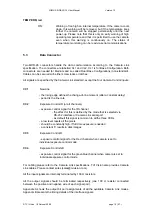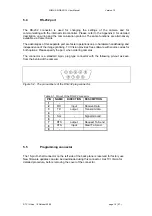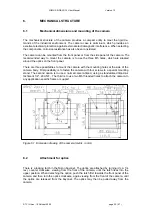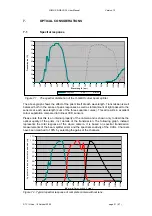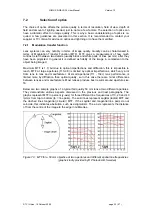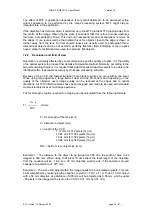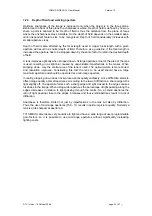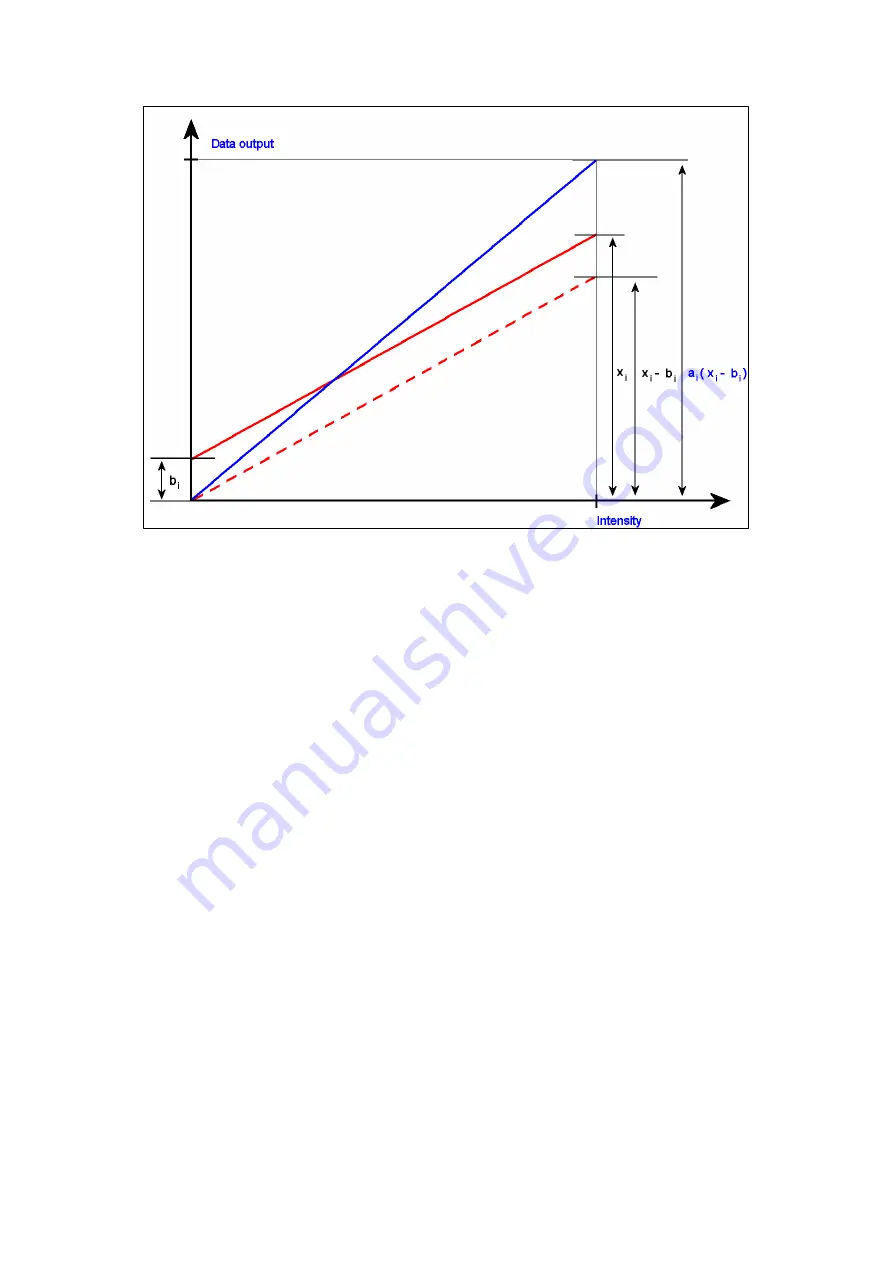
XIIMUS R-GB-IR CL User Manual. Version 1.2
Figure 4.2.
Correction algorithm.
The multiplier
a
i
has a 14-bit range. The multiplier is scaled so that a 14-bit multiplier value of
4096 DU by default equals multiplying by one. So, in order to increase the signal of a pixel it
has to be multiplied with a number greater than 4096 DU and accordingly it has to multiplied
with a smaller number to attenuate the signal. This means that a single pixel cannot be mul-
tiplied with a multiplier greater than 4 or attenuated more than into 1/4096. Please note that
multiplying with a number that is larger than one (4096) will result in some more noise in the
image, because the original data is scaled up (“stretched”) to cover a larger range.
By altering the content of the shifter register, it is possible to reset the multiplier unity level to
any power of two between 128 and 16384. Please notice, that setting this register to 16384
will not permit any amplification, but on the other hand will permit fine resolution attenuation.
Also, setting this register to low values will permit much amplification, but will make the mul-
tiplier effect coarser at values close to the selected unity value.
As mentioned above, the correction unit can perform multiple corrections on the image with
one set of correction data. White balancing or any user defined colour balance can be
achieved by multiplying the colour channels that have a response differing from the desired
response with suitable multipliers.
© TVI Vision, 18 October 2006 page 13 ( 57 )


















